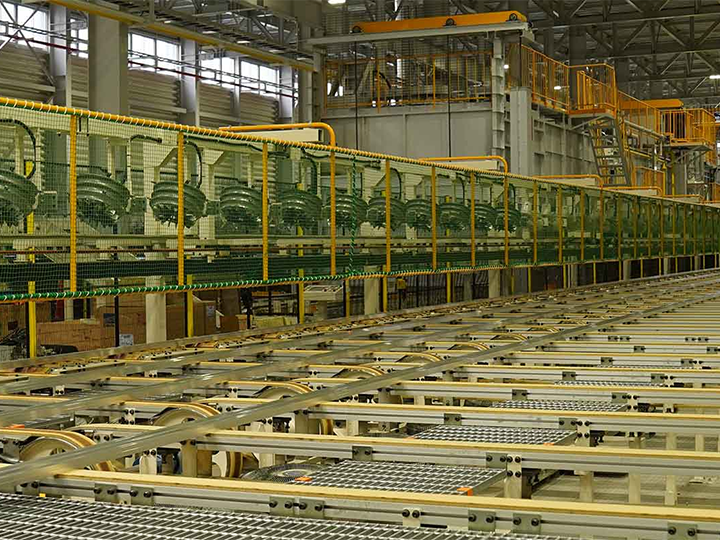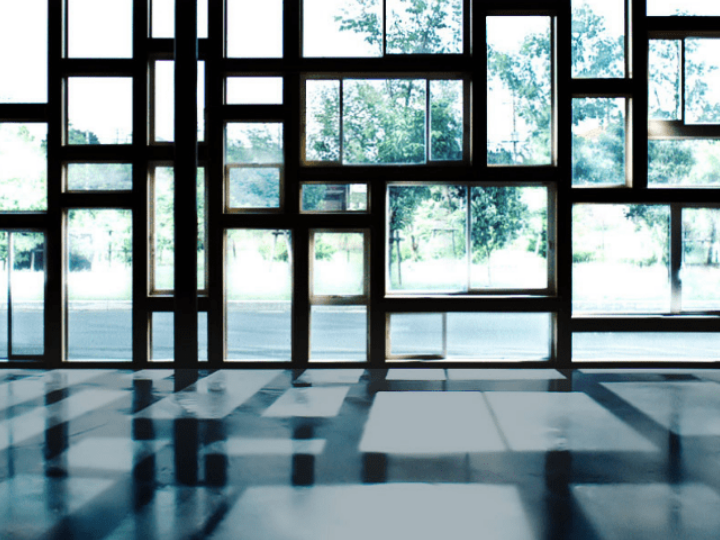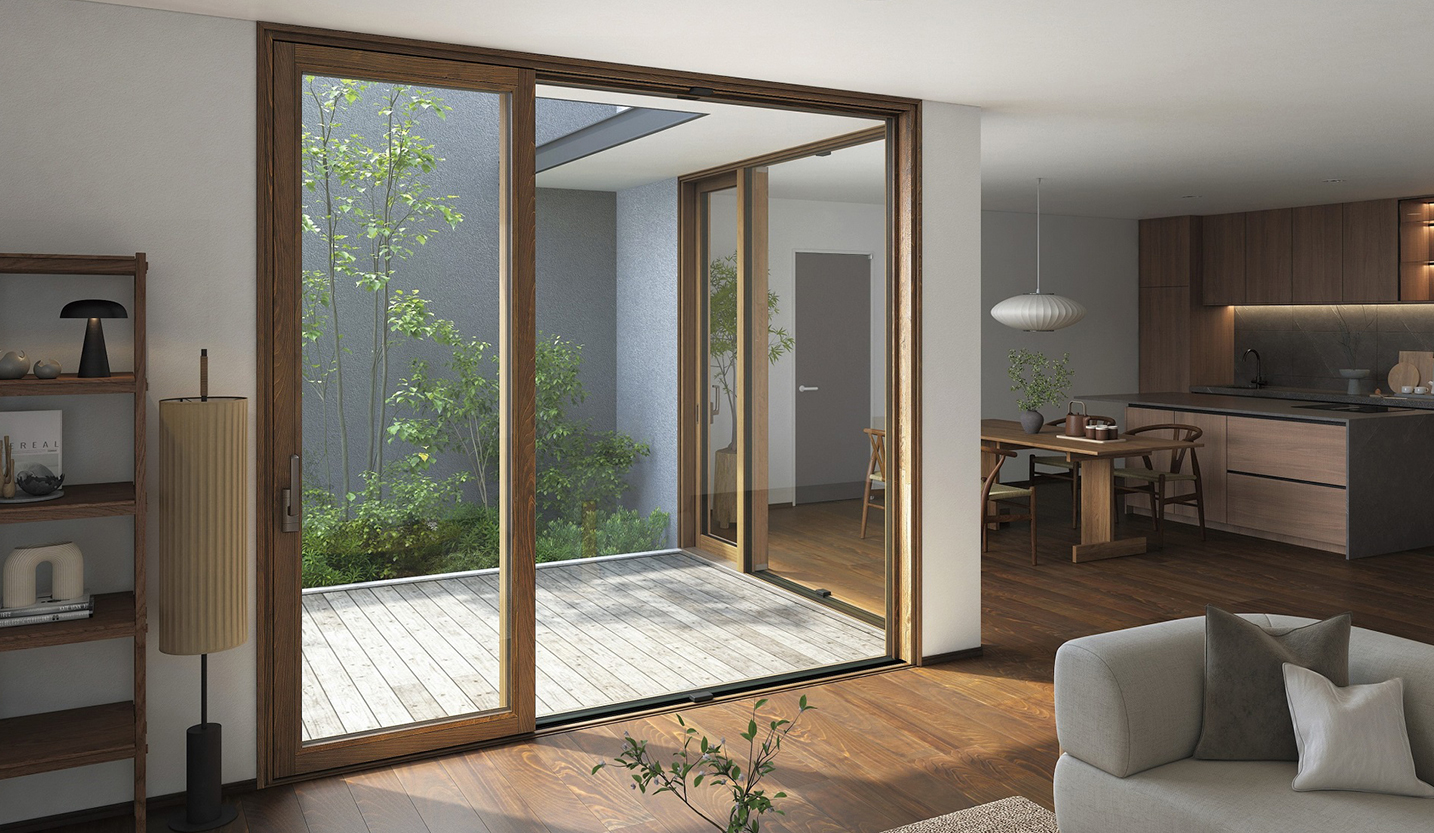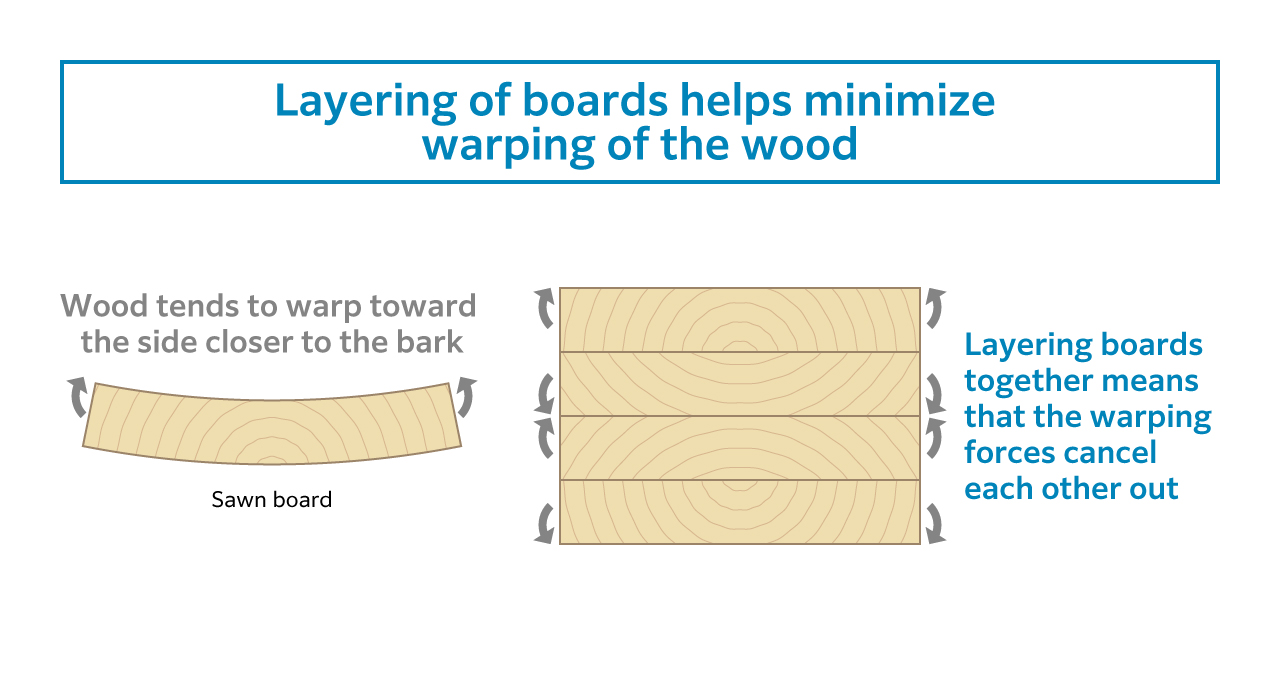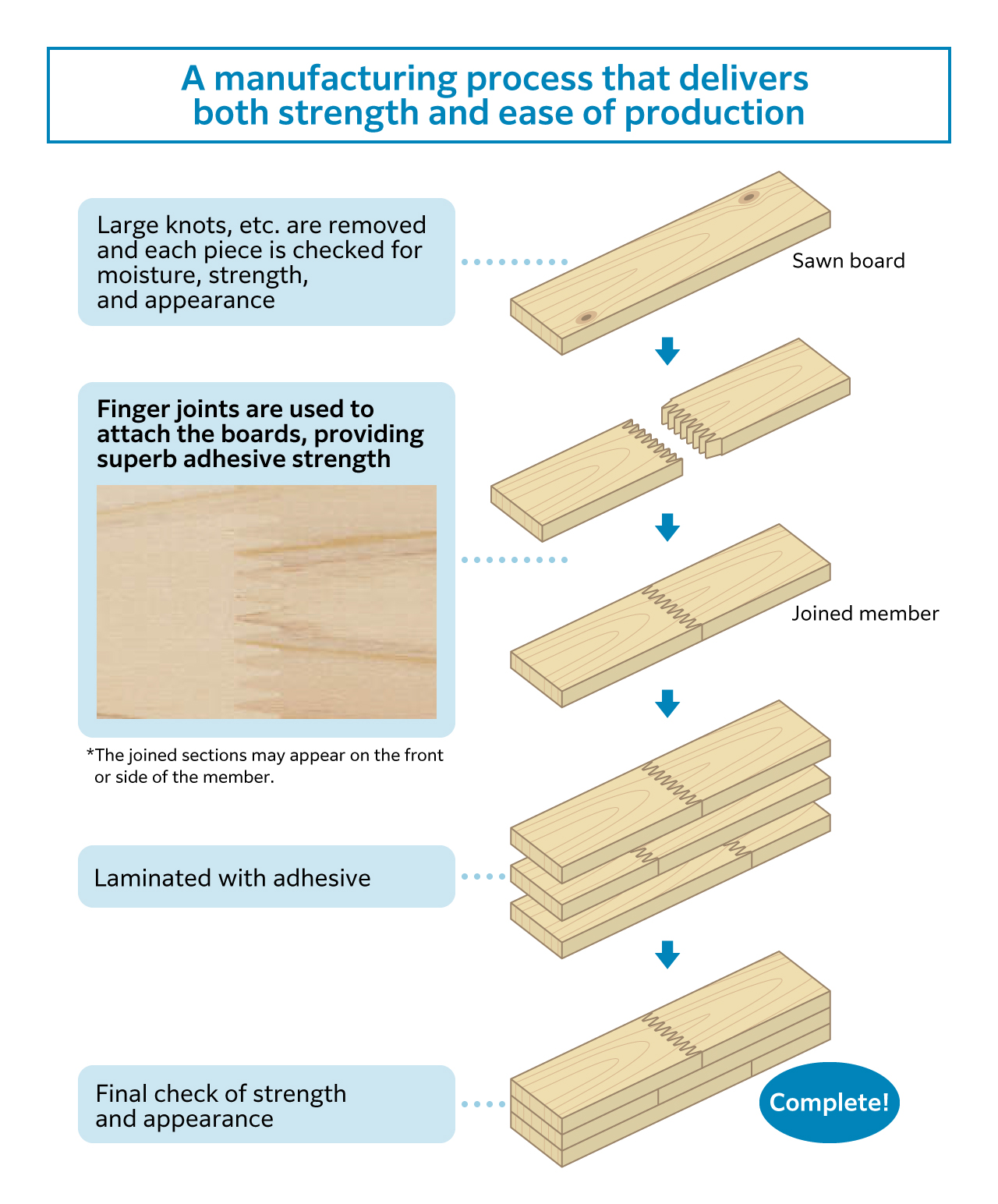- HOME
- Technologies
- Highlighted Technologies
- Pursuing our Commitment to Wood The APW 651 Wooden Window, Many Years in the Making
Pursuing our Commitment to Wood
The APW 651 Wooden Window, Many Years in the Making
Technologies
The APW 651 triple-glazed wooden window, which is made from Japanese timber, a renewable resource, combines the high-quality aesthetic of wood with strong thermal insulation performance.
Each type of wood has different characteristics and features. These depend not only on its species, but also on the growing environment. In order to achieve high performance, quality, durability, and aesthetic appeal, we have been paying close attention to the use of wood, developing and testing a wide range of technologies.
Development of Laminated Wood with Original Specifications Ideal for Windows
Until recently, difficulty of maintenance has prevented wooden windows from gaining much traction as an industrial product in Japan. To address this issue, the APW 651 has an aluminum-clad construction, with laminated Japanese cypress on the interior side and aluminum cladding on the exterior side.
In addition, the selection of species and the development of laminated wood technology were key points in order to achieve the strength required for large windows. In selecting the species of tree, we looked for domestic timber that met our independently developed criteria from a number of species, and arrived at Japanese cypress, which offers excellent durability performance.
This timber is used to produce laminated wood, which consists of sawn boards that have passed strength measurements glued together facing front and back alternately. This layering of boards helps to minimize warping of the wood. Another advantage of laminated wood is that while it passes strength measurements, the relatively weak areas are dispersed throughout the material, resulting in consistent quality.
In addition, in order to minimize waste of resources, large knots and other defects that affect strength are removed before the wood pieces are joined together. The joins themselves have also been developed in-house to provide not only strength, but also ease of production. Furthermore, by using a peel-resistant adhesive that combines quality and durability, we have established specifications that allow the product to adapt to the external environment. Since there is no standard for laminated wood for wooden windows in Japan, it took about two years of developing and testing various technologies to achieve specifications that met the criteria that YKK AP requires.
Color Variation Quantified and Minimized
Painting plays a major role not only in appearance, but also in protecting wood from moisture and scratches and improving maintainability. Taking into account environmental and health considerations, we decided to use water-based paint. After testing paints from both Japan and overseas, we decided to use a film-forming water-based paint made overseas, determining it to be sufficient in terms of finish, such as the ability to see the grain of the wood well, and in terms of performance, such as weather resistance. Film-forming paints produce a thick coating that can blot out the grain of the wood. However, by applying two layers of clear coating over an impregnating color primer, we achieved a finish that highlights the beautiful grain of Japanese cypress.
In order to automate the painting process in the factory, we developed our own painting and polishing machines. However, a major challenge was the uneven coloring caused by the differences between individual trees. To address this, we established our own evaluation method for wood paint color. This involves identifying factors related to color irregularities, such as differences in wood color, grain, moisture content, and paint thickness, and by investigating and analyzing them statistically. The results obtained from this process were quantified and the production equipment calibrated accordingly.
It remains the case that the use of wood, a natural material, presents a variety of challenges. We will continue to improve the quality of wooden windows by developing and testing various technologies.



